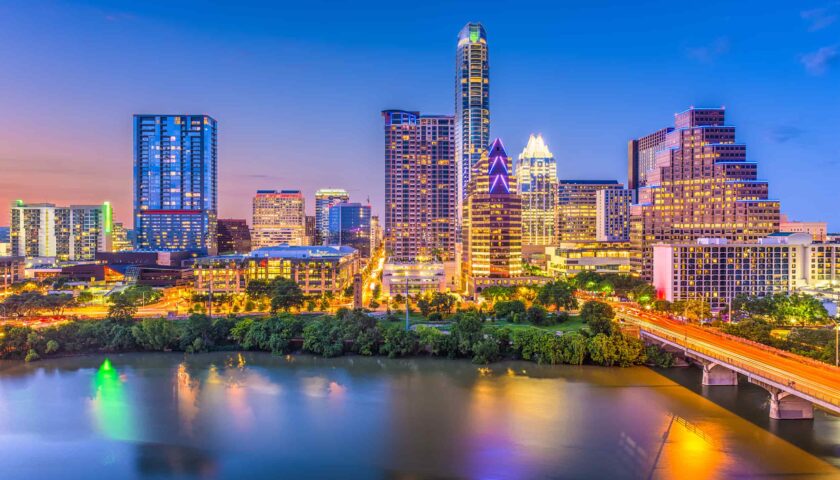In the ever-evolving world of real estate marketing, innovation is key. Aerial real estate photography is a game-changer, offering a fresh perspective that elevates property listings and captivates potential buyers. In this blog, we’ll explore the dynamic world of aerial real estate photography and the transformative impact it has on showcasing properties.
Soaring Above the Competition
Aerial real estate photography, often captured using drones, provides a unique vantage point that traditional ground-level photography simply cannot match. Here’s how this innovative approach is changing the real estate landscape:
- A Breathtaking Overview: Aerial photography provides a stunning overview of the property and its surroundings. It showcases the layout, size, and features of the property in a single, captivating shot. Whether it’s a sprawling estate with extensive grounds or a coastal property with ocean views, aerial shots reveal the big picture.
- Highlighting Location: Location is a critical factor in real estate. Aerial photography not only showcases the property itself but also its proximity to amenities, parks, schools, and more. It helps potential buyers get a sense of the neighborhood and its attractions.
- Scenic Settings: Properties with scenic surroundings, like waterfront homes or mountain retreats, benefit immensely from aerial photography. It captures the natural beauty that surrounds the property, allowing buyers to envision the lifestyle it offers.
- Emphasizing Space: Aerial shots make spaces appear larger and more spacious. This is especially valuable for properties with expansive yards, gardens, or multiple buildings. Buyers can appreciate the full scope of what the property has to offer.
- Creative Angles: Aerial photographers have the freedom to experiment with creative angles and perspectives. They can capture stunning shots from above, creating a visual narrative that draws potential buyers into the property’s story.
- Highlighting Unique Features: Aerial photography is excellent for highlighting unique features of a property, such as a swimming pool, tennis court, or rooftop terrace. These features become focal points, enhancing the property’s appeal.
- Comprehensive Property Tours: Aerial footage can be used to create comprehensive property tours. These virtual tours provide potential buyers with an immersive experience, allowing them to explore the property from the comfort of their homes.
- Differentiating Listings: In a crowded real estate market, aerial photography sets listings apart. Properties with aerial images tend to receive more attention and stand out from the competition.
- Assessing Property Condition: Aerial photography can also be valuable for assessing the condition of a property’s roof, landscaping, and exterior features. Buyers can gain insights into maintenance and potential renovation needs.
- Evoking Emotion: Aerial photography has the power to evoke emotion. It allows potential buyers to visualize themselves in the property, experiencing the lifestyle and surroundings it offers. It creates a connection that goes beyond traditional photos.
Mastering the Art of Aerial Real Estate Photography
Behind every breathtaking aerial real estate photograph is a skilled photographer who has mastered the art of capturing properties from the skies. Achieving those awe-inspiring shots takes more than just owning a drone; it requires a combination of technical know-how, creative vision, and careful planning. Here’s a deeper look into the craft of aerial real estate photography:
- Drone Expertise: Aerial real estate photographers are experts in drone operation. They understand the intricacies of drone models, camera systems, and flight regulations. Safety and precision are paramount, as drones are valuable tools that demand responsible operation.
- Strategic Planning: Each aerial shoot begins with meticulous planning. Photographers scout the property and its surroundings to identify the best angles and flight paths. They consider factors like wind, weather conditions, and the time of day to achieve optimal results.
- Camera Equipment: The quality of camera equipment is crucial. Aerial photographers use high-resolution cameras that capture every detail, ensuring that the images are sharp and visually stunning. These cameras are often equipped with stabilizers to counteract drone movement.
- GPS Technology: GPS technology is used to create flight plans and waypoints, allowing for precise control and consistent shots. It ensures that the drone follows a predetermined path, capturing the desired angles and views.
- Safety Measures: Safety is a top priority. Aerial photographers take precautions to ensure that the drone is operated safely and within legal boundaries. They also consider the safety of people and property on the ground.
- Framing and Composition: Just like ground-level photography, framing and composition are essential in aerial photography. Photographers carefully frame each shot to create a visually pleasing and balanced composition. They consider elements like symmetry, leading lines, and focal points.
- Controlling Altitude: Aerial photographers have the ability to control the drone’s altitude, allowing them to capture shots from various heights. This versatility is valuable for showcasing different aspects of the property, whether it’s an aerial view of the entire estate or a close-up of architectural details.
- Post-Processing: After capturing the images, post-processing plays a significant role. Photographers use specialized software to enhance colors, correct exposure, and fine-tune the images to perfection. The goal is to create visuals that are both stunning and true to life.
- Compliance with Regulations: Aerial real estate photographers are well-versed in aviation regulations. They ensure that their operations comply with local laws and obtain any necessary permits or authorizations for drone flights.
- Creative Innovation: While technical expertise is essential, creativity sets exceptional aerial photographers apart. They constantly seek innovative ways to capture properties, experimenting with angles, perspectives, and lighting to create captivating images.
The Evolution of Aerial Real Estate Photography
Aerial real estate photography has come a long way since its inception. Over the years, it has evolved, incorporating cutting-edge technology and innovative techniques to capture properties in the most compelling and visually striking ways. Here’s a glimpse into the evolution of this captivating field:
- Early Days: Helicopters and Balloons
In the early days of aerial real estate photography, capturing images from the sky required the use of helicopters or hot air balloons. This method was expensive, cumbersome, and limited to only the most high-end properties. The images were often less detailed due to the limitations of film cameras.
- Rise of Drones
The game-changer for aerial real estate photography was the advent of drones. These unmanned aerial vehicles (UAVs) equipped with high-resolution cameras provided a cost-effective and flexible way to capture stunning aerial shots. Drones made it possible to showcase properties of all sizes and price ranges, democratizing the use of aerial imagery in real estate marketing.
- Advanced Camera Technology
As camera technology continued to advance, aerial real estate photographers gained access to even more powerful imaging equipment. High-resolution sensors, better low-light performance, and improved stabilization systems allowed for the capture of incredibly detailed and visually striking images.
- Virtual Tours and 360-Degree Views
Aerial real estate photography expanded beyond static images. Virtual tours and 360-degree views became popular, providing potential buyers with immersive experiences. Using drones, photographers could create dynamic video tours and interactive panoramas that allowed viewers to explore properties as if they were there in person.
- Data and Analytics Integration
Incorporating data and analytics into aerial photography became a trend. Drones equipped with sensors and software could provide valuable insights into a property’s condition. For example, thermal imaging could identify energy leaks, and aerial surveys could assess roof conditions.
- Augmented Reality (AR) and Virtual Reality (VR)
Aerial photography began to integrate with augmented reality (AR) and virtual reality (VR) technologies. Buyers could use AR apps to explore properties with virtual overlays, while VR headsets allowed for immersive property walkthroughs from the comfort of their homes.
- AI-Powered Image Enhancement
Artificial intelligence (AI) and machine learning have entered the scene, enabling photographers to enhance images automatically. AI algorithms can correct exposure, balance colors, and even remove unwanted objects from photos, ensuring that every shot is visually stunning.
- Real-Time Streaming
Drones equipped with real-time streaming capabilities enable live property viewings from anywhere in the world. Buyers can participate in virtual open houses and ask questions in real time, making the property exploration process more interactive.
- Compliance and Regulation
With the rise of drones, regulations and compliance became a significant consideration. Aerial photographers must stay informed about aviation laws and obtain necessary permits to operate drones legally.
- Sustainable Practices
Environmental considerations have also played a role in the evolution of aerial real estate photography. Some photographers are adopting sustainable practices by using electric drones and minimizing their carbon footprint.
Conclusion: A Bright Future in the Sky
Aerial real estate photography has evolved from its early beginnings to become an integral part of the real estate marketing landscape. As technology continues to advance, we can expect even more innovative approaches to capturing properties from the sky. From breathtaking aerial views to immersive virtual experiences, the future of aerial real estate photography promises to be as dynamic and exciting as the properties it showcases.





